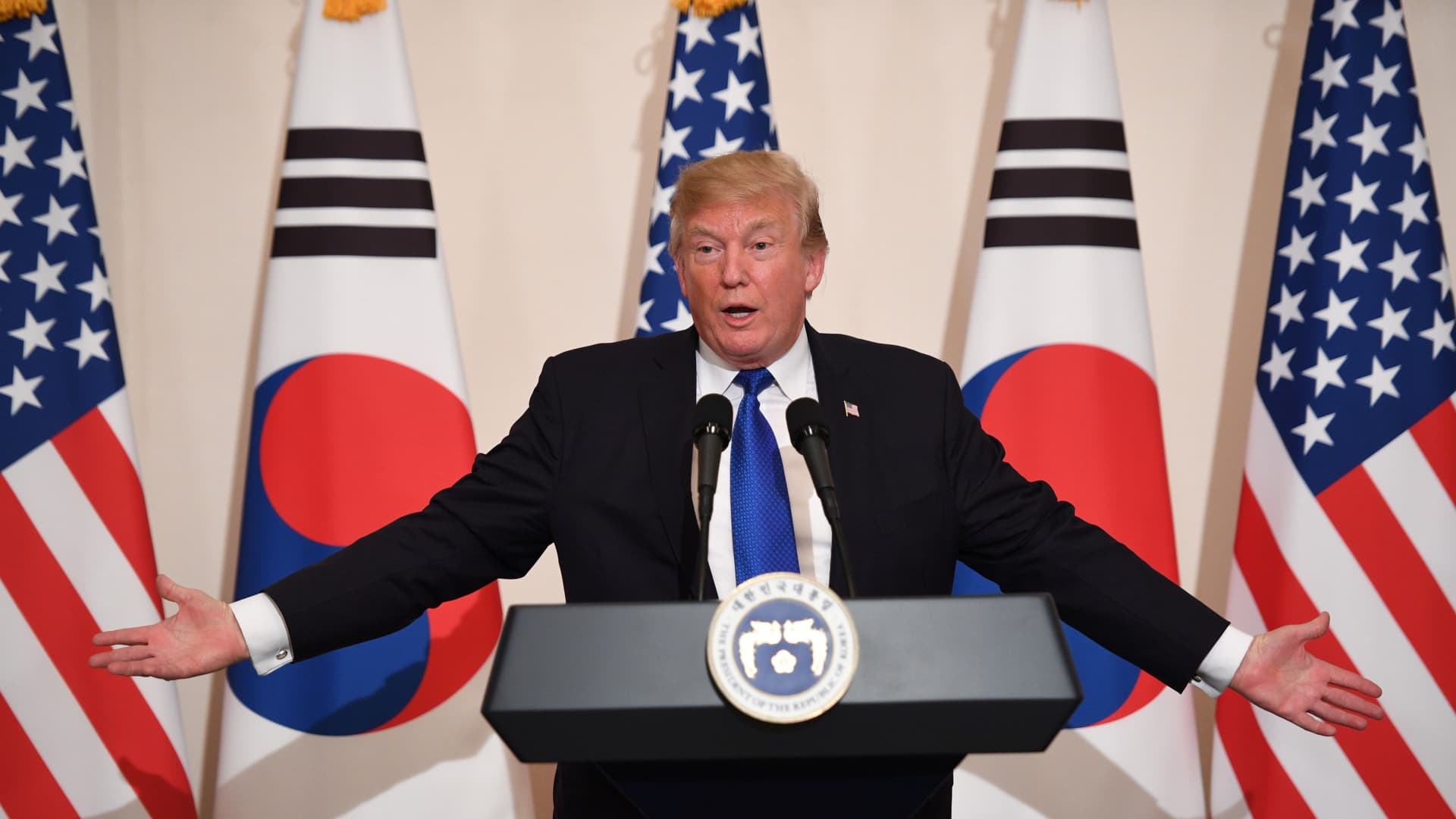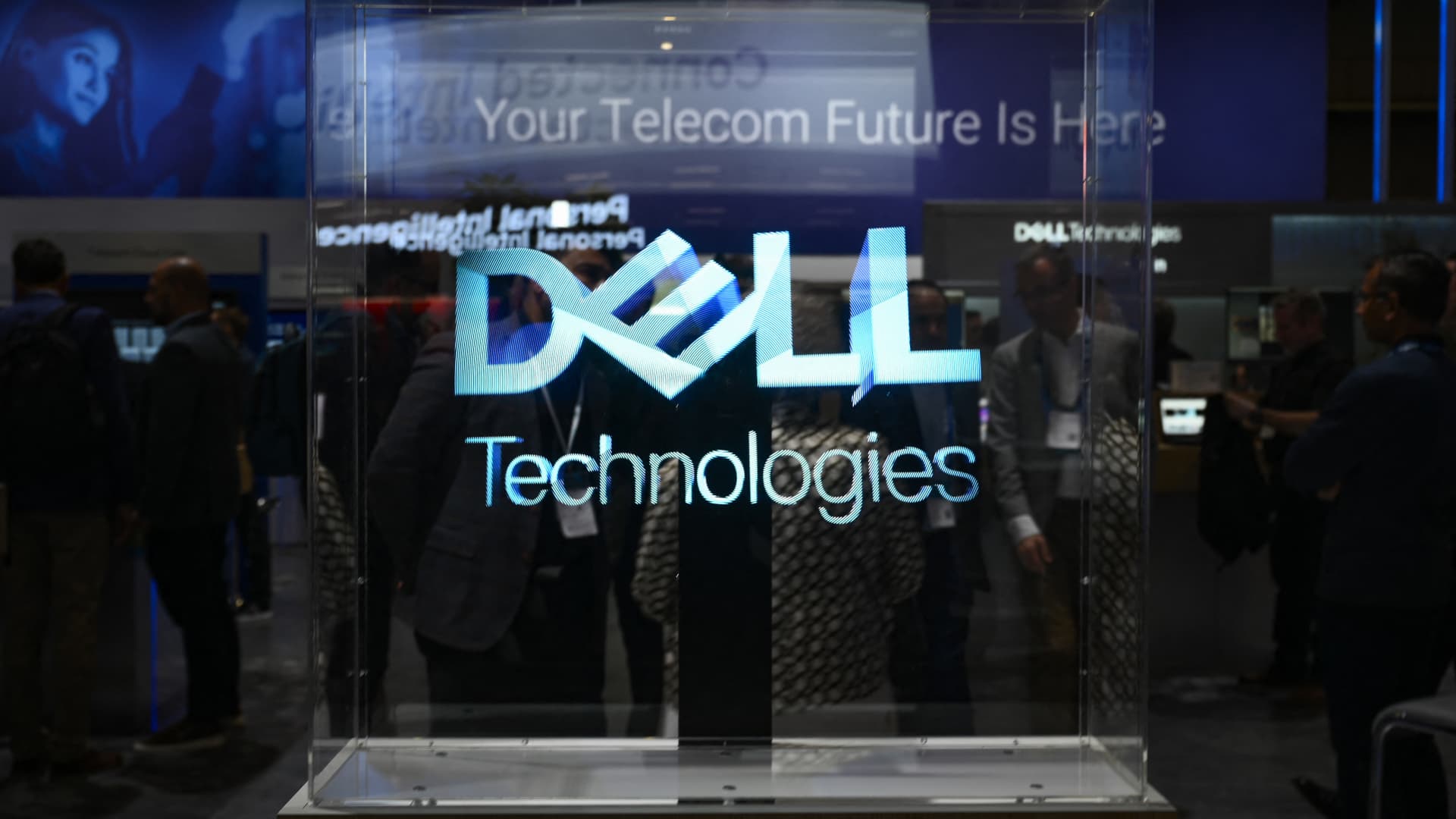U.S. and South Korea strike a trade deal with tariffs on Seoul set at 15%

File photo: US President Donald Trump gestures during a joint press conference in South Korea.
Afp Contributor | Afp | Getty Images
U.S. President Donald Trump on Wednesday announced that Washington had reached a “Full and Complete” trade deal with Seoul, setting blanket tariffs on the country’s exports to U.S. at 15%.
This deal means that duties will be lowered from the 25% that Trump had threatened in his “tariff letter” to Seoul earlier this month. Tariffs on the country’s auto exports set at 25% will also be cut to 15%.
Trump also said in his post on social media platform Truth Social that South Korea “will give to the United States $350 Billion Dollars for Investments owned and controlled by the United States, and selected by myself, as President.”
There appeared to be a difference in the interpretation between Seoul and Washington on how that amount would be utilized.
Announcing in a post on Facebook that his country had “concluded tariff negotiations” with the United States, South Korea’s President Lee Jae-myung said that the $350 billion fund “will play a role in facilitating the active entry of Korean companies into the US market in industries where we have strengths, such as shipbuilding, semiconductors, secondary batteries, biotechnology, and energy,” according to a CNBC translation of his statement in Korean.
He said $150 billion of that allocation will be for “shipbuilding cooperation providing strong support for Korean companies entering the US shipbuilding industry,” adding that “It’s important to achieve mutually beneficial outcomes, not just pursue unilateral gains.”
In comments to CNBC after the deal was announced, Louise Loo, head of Asia economics at advisory firm Oxford Economics, said that the numbers announced so far “don’t add much more clarity — as with the deals [the] US struck with other Asian peers.”
U.S. Commerce Secretary Howard Lutnick said that “90% of the profits” from that $350 billion investment will be “going to the American people.” This is similar to what Trump announced about Japan’s investment in the U.S. as part of a trade deal agreed earlier this month, which has reportedly been challenged by Tokyo.
Japan’s government said Friday that profits from a $550 billion investment agreed in the tariff deal with the U.S. would be divided between the two countries based on their degree of contributions, according to a Reuters report.
Wendy Cutler, senior vice president of the Asia Society Policy Institute and former deputy U.S. trade representative said in a note that “Once a U.S. trade deal was concluded with Japan, Korean negotiators had little choice but to work hard to conclude their own trade deal so as not to be disadvantaged in the U.S. market.”
While Seoul did not manage to get any concessions on steel and semiconductors, she noted that it had successfully resisted U.S. calls to further open its beef and rice markets, which Cutler describes as “two highly sensitive sectors.”
was about 0.79%.
ASPI’s Cutler said that the new deal “negates the value of our bilateral FTA where the US and Korea eliminated almost all of their respective tariffs. As an FTA partner, Korea regrettably seems to have not received any special treatment.” Seoul has had a free trade agreement with the U.S. since 2012.
U.S. goods trade with South Korea was a little over $197 billion in 2024, according to U.S. government data, and its deficit with the country stood at $66.0 billion in 2024, 29.2% higher from a year earlier.
Lee said in his post that “I hope that through this, industrial cooperation between Korea and US will be strengthened and the alliance between Korea and America will also be strengthened,” while adding that Seoul will keep “diplomacy centered on national interest” as its top principle.
South Korea will “not be treated any worse than any other country on semiconductors and pharmaceuticals. Steel, aluminum, and copper are not included and remain unchanged,” Lutnick said. Steel, aluminum and copper exports to the U.S. across countries face 50% tariffs.
Oxford’s Loo said South Korea locking in a 15% tariff rate for autos like Japan “could be seen as a win for President Lee [Jae Myung].” She cautioned though that tariffs on electronics and semiconductors could still be escalated.
South Korea’s benchmark Kospi index was up 0.5% after the announcement, while yields on its benchmark 10-year bonds were marginally higher.
[title_words_as_hashtags



